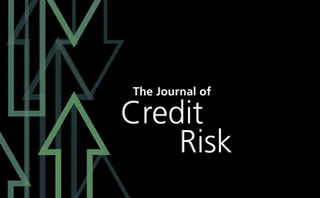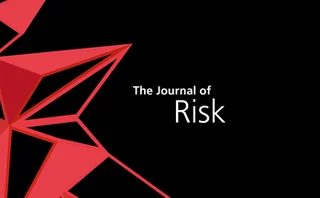Technical paper/Bonds
How do credit rating agencies and bond investors react to credit guarantees? Evidence from China’s municipal corporate bond market
This paper investigates China's municipal corporate bond market, examining the responses of credit rating agencies and bond investors to credit guarantees.
Covid-19 and the credit cycle
The Covid-19 health crisis has dramatically affected just about every aspect of the economy, including the transition from a record long benign credit cycle to a stressed one, with still uncertain dimensions. This paper seeks to assess the credit climate…
Two-factor Black-Karasinski pricing kernel
Analytic formulas for bond prices and forward rates are derived by expanding existing rate models
The fair basis
Wujiang Lou remodels credit arbitrage by introducing funding and capital costs
A fifty-year retrospective on credit risk models, the Altman Z-score family of models and their applications to financial markets and managerial strategies
This paper reflects upon the evolution of the Altman family of bankruptcy prediction models, as well as their extensions and multiple applications in financial markets and managerial decision making.
Emerging market corporate bonds as first-to-default baskets
Modified Merton model offers insights on EM corporate debt
Reliability and agreement of credit ratings in the Mexican fixed-income market
This paper borrows concepts from measurement, test and psychometric theories to explore the issue of credit ratings in the Mexican corporate bond market.
Causality networks of financial assets
Through financial network analysis, this paper ascertains the existence of important causal behavior between certain financial assets, as inferred from eight different causality methods.
Modeling superior predictors for crude oil prices
This paper provides an analysis of a broad spectrum of fundamental and nonfundamental indicators for crude oil prices.
Debt–liquidity shock risk: intertemporal effects and probability measures
This paper analyzes how the yield of government securities may be managed in order to save costs in the face of the risk of a liquidity shock.
A novel partial integrodifferential equation-based framework for pricing interest rate derivatives under jump-extended short-rate models
Interest rate derivatives under jump-extended short-rate models have commonly been valued using lattice methods. This paper proposes a much faster and more accurate valuation method based on partial integrodifferential equations.
When did the JGB market become efficient?
Focusing on the deviation from the fair-yield curve, Koichi Miyazaki and Satoshi Nomura discuss the transition in efficiency observed in the Japanese government bond market and find out that the turning point was in 1996, when the Japanese repo market…
When did the JGB market become efficient?
Focusing on the deviation from the fair-yield curve, Koichi Miyazaki and Satoshi Nomura discuss the transition in efficiency observed in the Japanese government bond market and find out that the turning point was in 1996, when the Japanese repo market…
Portfolio allocation to corporate bonds with correlated defaults
This article deals with the problem of optimal allocation of capital to corporate bonds in fixed income portfolios when there is the possibility ofcorrelated defaults. Under fairly general assumptions for the distribution of thetotal net assets of a set…
Margining the spread
Liquidity risk










